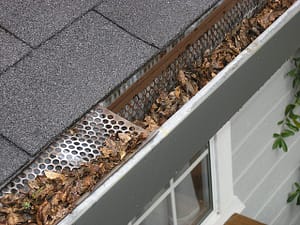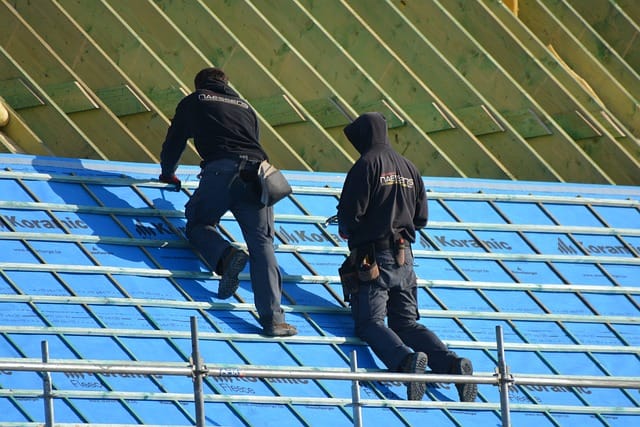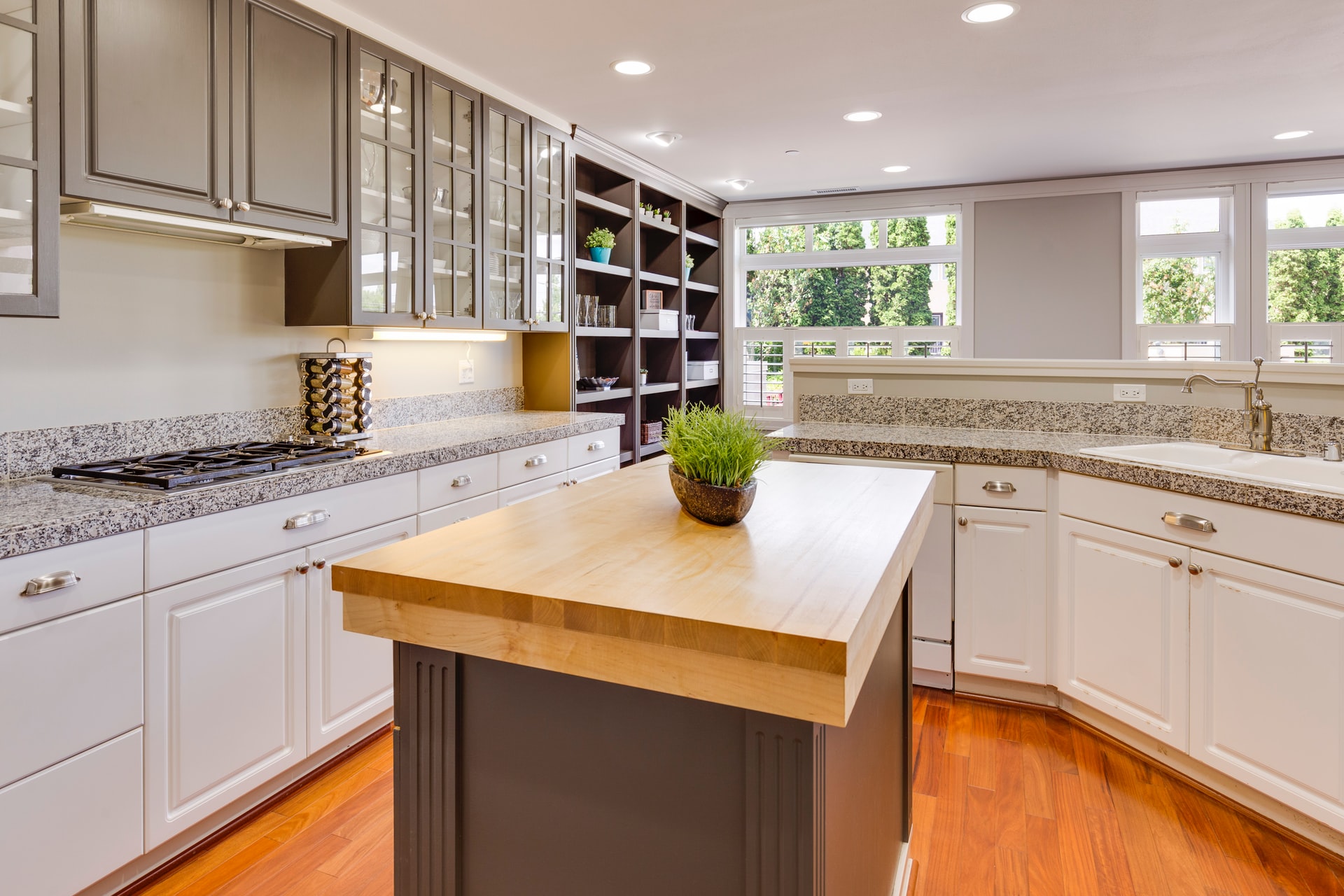Home » tips
Tag: tips
-
A Step-by-Step Guide: Installing Rain Gutters at Your Home
Are you tired of rainwater wreaking havoc on your home’s exterior? Well, fear no more. We’ve got the ultimate solution for you – installing rain gutters. Whether you’re a seasoned DIY enthusiast or just looking to save some hard-earned cash, this step-by-step guide will walk you through the entire process of adding these ingenious systems to your home. Get ready to bid farewell to water damage and hello to a charmingly protected abode. So, grab your tools, and let’s dive into the world of rain gutter installation together.
Assess Your Home’s Needs
 Before diving into the installation process, conduct a thorough assessment of your home’s requirements. Consider factors such as the roof size, the average rainfall in your area, and the type of landscaping around your property. These factors will influence the size and capacity of the gutters you need. Additionally, identify optimal downspout locations to direct rainwater away from the foundation and landscaping. Take note of any obstacles or unique features, such as chimneys, vents, or corners that may affect the gutter installation. This initial assessment is crucial for selecting the right materials and planning an effective gutter system tailored to your home’s specific needs. Gutters Destin company can assist with this process and provide recommendations for your specific home.
Before diving into the installation process, conduct a thorough assessment of your home’s requirements. Consider factors such as the roof size, the average rainfall in your area, and the type of landscaping around your property. These factors will influence the size and capacity of the gutters you need. Additionally, identify optimal downspout locations to direct rainwater away from the foundation and landscaping. Take note of any obstacles or unique features, such as chimneys, vents, or corners that may affect the gutter installation. This initial assessment is crucial for selecting the right materials and planning an effective gutter system tailored to your home’s specific needs. Gutters Destin company can assist with this process and provide recommendations for your specific home.Gather the Necessary Materials and Tools
Once you’ve assessed your home’s requirements, gather all the materials and tools necessary for the job. This will likely include installation material (insulation, vapor barrier, etc.), a utility knife, staple gun, caulk, and any necessary safety equipment. You may also require measuring tape, a ladder, and a hammer. Depending on the specific project, you may need additional tools and materials, so make sure to research and plan accordingly.
Install the Gutters and Downspouts
With all materials and tools on hand, it’s time to begin the installation process. Start by attaching the gutters to the fascia board using the hangers and brackets. Ensure they have a slight downward slope toward the downspout to facilitate proper drainage. Use a measuring tape and level to guarantee accuracy during this phase. Connect the gutters using end caps, corner pieces, and connectors, securing them with screws. Pay close attention to corners and joints, applying sealant to prevent water leakage. Once the gutters are in place, attach the downspouts, directing them away from the foundation and ensuring a smooth flow of water.
Test the System
After the installation is complete, it’s crucial to test the gutter system to ensure proper functionality. Use a hose to simulate rainfall and observe the water flow through the gutters and downspouts. Check for any leaks, misalignments, or areas where water may pool. Make necessary adjustments, such as repositioning hangers or adding more sealant, to address any issues identified during testing.
Regular Maintenance and Inspection
 Installing rain gutters is not a one-time task; regular maintenance is essential to ensure their continued effectiveness. Clean the gutters and downspouts regularly, removing leaves, debris, and any other obstructions that could impede water flow. Inspect the system for signs of wear, rust, or damage, and promptly address any issues to prevent further damage. Installing rain gutters is a practical investment in the longevity and integrity of your home. By following these five steps, you can safeguard your property from potential water damage and enjoy the peace of mind that comes with a well-designed and properly installed gutter system. Taking the time to plan and execute this essential home improvement project will pay off in the long run, protecting your home and preserving its value.…
Installing rain gutters is not a one-time task; regular maintenance is essential to ensure their continued effectiveness. Clean the gutters and downspouts regularly, removing leaves, debris, and any other obstructions that could impede water flow. Inspect the system for signs of wear, rust, or damage, and promptly address any issues to prevent further damage. Installing rain gutters is a practical investment in the longevity and integrity of your home. By following these five steps, you can safeguard your property from potential water damage and enjoy the peace of mind that comes with a well-designed and properly installed gutter system. Taking the time to plan and execute this essential home improvement project will pay off in the long run, protecting your home and preserving its value.… -
Navigating Roof Replacement: A Comprehensive Guide for Homeowners
A well-maintained roof is essential for protecting your home from the elements and ensuring the safety and comfort of its occupants. Over time, however, even the most durable roofs can succumb to wear and tear, necessitating a complete roof replacement. In this comprehensive and helpful article, we’ll explore the various aspects of the roof replacement process, providing valuable insights and tips to help you make informed decisions and ensure a successful project execution from philadelphia roofers.
Understanding the Need for Roof Replacement
Several factors can contribute to the need for a roof replacement, including:
- Age: Most roofing materials have a finite lifespan, and roofs that are nearing the end of their expected life may require replacement.
- Damage: Extensive damage from storms, falling debris, or other incidents can compromise a roof’s integrity, making replacement necessary.
- Leaks: Persistent leaks, despite repair attempts, could indicate more significant underlying issues that warrant a roof replacement.

The Roof Replacement Process: Key Aspects to Consider
When embarking on a roof replacement project, it’s essential to consider several key aspects, including costs, materials, permits, and timelines.
Costs
The cost of a roof replacement can vary widely based on factors such as the size and complexity of the roof, the materials used, and labor rates in your area. It’s crucial to obtain multiple quotes from reputable roofing contractors to ensure you’re getting the best value for your investment. Keep in mind that while choosing the lowest bid may be tempting, quality workmanship and materials should always take precedence to avoid future issues.
Materials
 There is a wide range of roofing materials available, each with its benefits and drawbacks. Common options include asphalt shingles, metal roofing, wood shakes, and clay or concrete tiles. When selecting a roofing material, consider factors such as durability, maintenance requirements, energy efficiency.
There is a wide range of roofing materials available, each with its benefits and drawbacks. Common options include asphalt shingles, metal roofing, wood shakes, and clay or concrete tiles. When selecting a roofing material, consider factors such as durability, maintenance requirements, energy efficiency.Permit Requirements
Most roof replacement projects require permits from your local building department. Be sure to familiarize yourself with the permit process and any applicable codes or regulations in your area. A reputable roofing contractor should be able to handle the permit application process on your behalf.
Timeline
The timeline for a roof replacement project can vary depending on factors such as the size of the roof, weather conditions, and the availability of labor and materials. In general, most roof replacements can be completed within a few days to a week. Be sure to discuss the expected timeline with your roofing contractor and make any necessary arrangements to minimize disruptions to your daily routine.
Choosing the Right Installation Professionals
Selecting the right roofing product and installation professionals is crucial for ensuring a smooth and effective roof replacement project. When evaluating potential contractors, consider factors such as:
- Licensing and insurance: Verify that the contractor holds the appropriate licenses and insurance coverage required in your area.
- References and reviews: Request references from past clients and read online reviews to gauge the contractor’s reputation and quality of work.
- Experience and expertise: Choose a contractor with experience in installing your preferred roofing material and a proven track record of successful roof replacement projects.
In Conclusion
Your roof is an essential asset that plays a critical role in protecting your home and maintaining its value. By understanding the roof replacement process, choosing the right materials and professionals, and following the tips and precautions outlined in this article, you can ensure successful project execution and enjoy the benefits of a well-maintained roof for years to come. Remember, investing in your roof’s long-term health is an investment in your home’s overall well-being.…
-
Ways Homeowners Keep Their Pools in Top Shape
As summer rapidly approaches, many homeowners are already considering ways to enjoy their swimming pool. A backyard swimming pool is the perfect addition to any home, creating an idyllic spot for fun and relaxation with family and friends. But owning a pool also involves taking care of it properly to ensure that it remains clean and inviting all season long. Some homeowners like to renovate their pools. If you are interested in doing so, you should know the process of pool renovations in Brisbane. Here, we will talk about ways homeowners keep their pools in top shape.
They Clean It Regularly
 One way homeowners keep their pool in top shape is by regularly cleaning it. This includes removing debris, dirt, and leaves from the surface as well as skimming so that the filter has an easier time filtering out any impurities.
One way homeowners keep their pool in top shape is by regularly cleaning it. This includes removing debris, dirt, and leaves from the surface as well as skimming so that the filter has an easier time filtering out any impurities.Additionally, homeowners can add chlorine to the pool’s water to kill off bacteria and algae. They should check the pH levels of their pool’s water and adjust accordingly. Numerous pool cleaning companies offer these services if you do not know how to do this properly. You must keep the water balanced in order to keep your pool healthy and safe.
They Check the Pool Equipment
Another way to keep your pool in top shape is to ensure all the equipment is functioning properly. This includes checking the filters, skimmers, pumps, and other mechanical parts associated with the pool. Homeowners should also inspect all piping for leaks or cracks and check that any electrical connections are secure and working correctly. If any of these components are not functioning properly, they should be repaired or replaced immediately to prevent further damage. There have many cases in which people have neglected their pool equipment, and it has cost them a lot of money in the long run. This can easily be avoided by doing regular maintenance checks.
They Change the Water Annually
 Finally, homeowners should also plan to change the water in their pool at least once a year. This helps keep the pool’s chemistry balanced and prevents any build-up of contaminants and bacteria that can make swimming unsafe. The amount of water needed will depend on how large your pool is, so be sure to calculate how much you will need before starting this process.
Finally, homeowners should also plan to change the water in their pool at least once a year. This helps keep the pool’s chemistry balanced and prevents any build-up of contaminants and bacteria that can make swimming unsafe. The amount of water needed will depend on how large your pool is, so be sure to calculate how much you will need before starting this process.Many pool owners use a water truck for this job, which is an easy and efficient way to ensure that you get the correct amount of freshwater into your pool. But, if you do not want to invest in a water truck, you can also use a garden hose and a bucket. By following these tips, homeowners can ensure that their pool is in top shape all season long. Regular maintenance and care will help to make sure that the pool provides a safe and enjoyable environment for everyone who uses it. So, grab your swimsuit and have fun. We hope that you have found this blog post helpful.…
-
How to Optimize Your Standing Desk for Maximum Productivity
Are you looking for ways to be more productive at work? If so, consider using a standing desk. Standing desks have been shown to improve productivity and energy levels and can even help burn calories. However, if you’re not using your standing desk correctly, you may not get the full benefits. This blog post will discuss some essential tips for optimizing your standing desk for maximum productivity.
Alternate Between Standing and Sitting
While standing desks can benefit your health and productivity, taking breaks throughout the day is essential. Alternate between sitting and standing every hour or so, depending on how you feel. This will help keep your body from getting tired and avoid any potential pain that can come with overdoing it while standing.

Take Breaks
another vital tip for optimizing your standing desk for maximum productivity is to take breaks throughout the day. Taking regular breaks can help you stay focused and energized and give your body a chance to rest. Try setting the alarm on your phone or computer every hour or two to remind yourself to stand up and take a break.
In addition, Standing all day can put pressure on your joints and cause fatigue. To help reduce this, consider investing in an anti-fatigue mat. This cushiony pad will help support your feet and legs, reducing strain and discomfort throughout the day.
Adjust to the Right Height
Adjusting your standing desk to the correct height is essential for maximizing productivity. Your elbows should be at a 90-degree angle when you’re typing, and your feet should be comfortably planted on the floor. You may need to purchase an adjustable model if your desk is not at the correct height. In addition, consider any changes in your height as the day goes on, such as if you are wearing shoes with a lower heel.
Use Arm Supports
Finally, if you find your arms tired while typing or using a mouse, consider adding arm supports to your standing desk. These adjustable supports can help reduce the strain on your hands and wrists, making it easier to type for more extended periods. in addition, they also help keep your arms in the correct posture, which can help improve typing accuracy.
Following these tips can optimize your standing desk for maximum productivity. Whether looking for improved energy levels or a healthier lifestyle, using a standing desk is an excellent investment. With some simple adjustments and additions, you’ll be able to reap the many benefits of using a standing desk.…
-
Pros and Cons of Wood Countertops
Wooden countertops are a popular choice for many homeowners. They offer a natural, warm look that can enhance the appearance of your kitchen. However, there are also some drawbacks to consider before making a decision. In this blog post, we will discuss the pros and cons of wood custom sized butcher blocks so that you can make an informed decision about whether or not they are right for you.
Pros of Butcher Block Countertops
 Cheap & Easy to Maintain: One of the biggest advantages of wood countertops is that they are relatively inexpensive. You can find them made from various woods, including maple, oak, and cherry. In addition, they are easy to care for and maintain. Wipe them down with a damp cloth regularly and they will continue to look great for years to come.
Cheap & Easy to Maintain: One of the biggest advantages of wood countertops is that they are relatively inexpensive. You can find them made from various woods, including maple, oak, and cherry. In addition, they are easy to care for and maintain. Wipe them down with a damp cloth regularly and they will continue to look great for years to come.Unique Look: Another pro of wood countertops is that they offer a unique look that you cannot find with any other type of countertop material. If you are looking for a way to make your kitchen stand out, wood countertops may be the way to go.
Extremely Durable: Wood countertops are extremely durable despite their relatively low cost. If you take care of them properly, they can last for decades. This makes them a great investment for any home. You can also refinish them if they show signs of wear and tear.
Heat Resistant: Wood countertops are also heat resistant, which is a major advantage if you cook in your kitchen. You can place hot pans and pots on them without worrying about damaging the countertop.

Cons of Butcher Block Countertops
Maintenance Is Required: One of the biggest disadvantages of wood countertops is that they require more maintenance than other countertops. It would be best if you oiled them regularly to keep them looking their best. In addition, you should avoid cutting directly on the surface as this can damage the countertop.
They Can Be Scratched: Another downside of wood countertops is that they can be scratched more easily than other materials. However, this is not necessarily bad, as scratches can add to the countertop’s unique look.
They Can Be Stained: Wood countertops can also be stained if you are not careful. Again, this is not necessarily bad, as stains can add to the countertop’s unique look. However, you must be careful when using certain products around your wood countertops, as they can damage the finish.
Not Naturally Waterproof: Unlike other materials, wood is not naturally waterproof. You will need to take extra care to seal your countertops regularly. Failure to do so can result in water damage and staining. As you can see, there are pros and cons to consider before deciding whether or not wood countertops are right for you. Weigh the pros and cons carefully to make the best decision for your home.…


 Before diving into the installation process, conduct a thorough assessment of your home’s requirements. Consider factors such as the roof size, the average rainfall in your area, and the type of landscaping around your property. These factors will influence the size and capacity of the gutters you need. Additionally, identify optimal downspout locations to direct rainwater away from the foundation and landscaping. Take note of any obstacles or unique features, such as chimneys, vents, or corners that may affect the gutter installation. This initial assessment is crucial for selecting the right materials and planning an effective gutter system tailored to your home’s specific needs.
Before diving into the installation process, conduct a thorough assessment of your home’s requirements. Consider factors such as the roof size, the average rainfall in your area, and the type of landscaping around your property. These factors will influence the size and capacity of the gutters you need. Additionally, identify optimal downspout locations to direct rainwater away from the foundation and landscaping. Take note of any obstacles or unique features, such as chimneys, vents, or corners that may affect the gutter installation. This initial assessment is crucial for selecting the right materials and planning an effective gutter system tailored to your home’s specific needs.  Installing rain gutters is not a one-time task; regular maintenance is essential to ensure their continued effectiveness. Clean the gutters and downspouts regularly, removing leaves, debris, and any other obstructions that could impede water flow. Inspect the system for signs of wear, rust, or damage, and promptly address any issues to prevent further damage. Installing rain gutters is a practical investment in the longevity and integrity of your home. By following these five steps, you can safeguard your property from potential water damage and enjoy the peace of mind that comes with a well-designed and properly installed gutter system. Taking the time to plan and execute this essential home improvement project will pay off in the long run, protecting your home and preserving its value.…
Installing rain gutters is not a one-time task; regular maintenance is essential to ensure their continued effectiveness. Clean the gutters and downspouts regularly, removing leaves, debris, and any other obstructions that could impede water flow. Inspect the system for signs of wear, rust, or damage, and promptly address any issues to prevent further damage. Installing rain gutters is a practical investment in the longevity and integrity of your home. By following these five steps, you can safeguard your property from potential water damage and enjoy the peace of mind that comes with a well-designed and properly installed gutter system. Taking the time to plan and execute this essential home improvement project will pay off in the long run, protecting your home and preserving its value.…

 There is a wide range of roofing materials available, each with its benefits and drawbacks. Common options include asphalt shingles, metal roofing, wood shakes, and clay or concrete tiles. When selecting a roofing material, consider factors such as durability, maintenance requirements, energy efficiency.
There is a wide range of roofing materials available, each with its benefits and drawbacks. Common options include asphalt shingles, metal roofing, wood shakes, and clay or concrete tiles. When selecting a roofing material, consider factors such as durability, maintenance requirements, energy efficiency.
 One way homeowners keep their pool in top shape is by regularly cleaning it. This includes removing debris, dirt, and leaves from the surface as well as skimming so that the filter has an easier time filtering out any impurities.
One way homeowners keep their pool in top shape is by regularly cleaning it. This includes removing debris, dirt, and leaves from the surface as well as skimming so that the filter has an easier time filtering out any impurities. Finally, homeowners should also plan to change the water in their pool at least once a year. This helps keep the pool’s chemistry balanced and prevents any build-up of contaminants and bacteria that can make swimming unsafe. The amount of water needed will depend on how large your pool is, so be sure to calculate how much you will need before starting this process.
Finally, homeowners should also plan to change the water in their pool at least once a year. This helps keep the pool’s chemistry balanced and prevents any build-up of contaminants and bacteria that can make swimming unsafe. The amount of water needed will depend on how large your pool is, so be sure to calculate how much you will need before starting this process.


 Cheap & Easy to Maintain:
Cheap & Easy to Maintain: